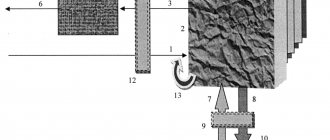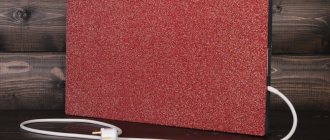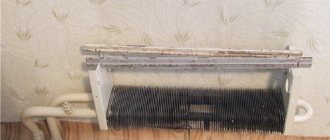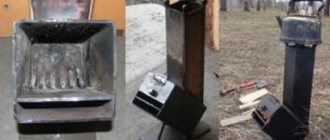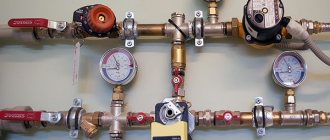If your home is not connected to a centralized hot water supply system, then you cannot do without a water heater. Many of us perceive the lack of hot water supply as a disaster. It’s not for nothing that water heaters are so in demand in the domestic market. They are installed in both cottages and apartments. You just need to choose the device that best suits your specific needs.
In this article we will consider the existing types of water heaters, their main characteristics, advantages and disadvantages. We will also conduct a comparative analysis of water heaters to find out which option to choose, taking into account your living conditions and your needs.
Types of water heaters by energy source
Before choosing a hot water heater, you need to decide on the heat source for heating. Most often it is gas or electricity.
But units operating on liquid or solid fuel are also possible. Only such heating devices will cost more than the first two options.
Gas is cheaper than electricity, but gas water heating equipment is more expensive than electric equipment in installation and operation - you should choose such equipment carefully
According to the type of energy carrier used, water heaters are divided into:
- gas;
- electrical;
- indirect heating.
In the first two cases, the water is heated as a result of gas combustion or the operation of a heating element. The third option is a system of a boiler and a storage boiler connected to it through a coil. In this case, the main boiler equipment in this combination can be gas, solid fuel, electric, etc.
The advantages of using gas include:
- cheap fuel;
- equipment service life is 10–15 years;
- high productivity and cost-effectiveness of equipment.
But for these advantages you have to pay with the need to invite a specialist to connect gas equipment and the obligation to install a chimney. Plus you will need a connection to a gas pipe. It is not recommended to connect the water heater from a cylinder. Bottled fuel is obviously more expensive than its pipeline counterpart.
Gas water heaters come with an open atmospheric and inflatable burner. For the former, the craving is natural, while for the latter it is forced. Any of these options requires large initial costs for equipment and installation, but then quickly pays off due to the low cost of natural gas.
The advantages of an electric water heater include:
- relatively low cost of equipment;
- light weight and small dimensions of the water heater;
- minimal risk of fires and explosions;
- possibility of self-installation of the heater.
The main disadvantage of electric water heating is the power limitation. If a water heater is required for a family of 4–5 or more people, then it is better to prefer gas appliances.
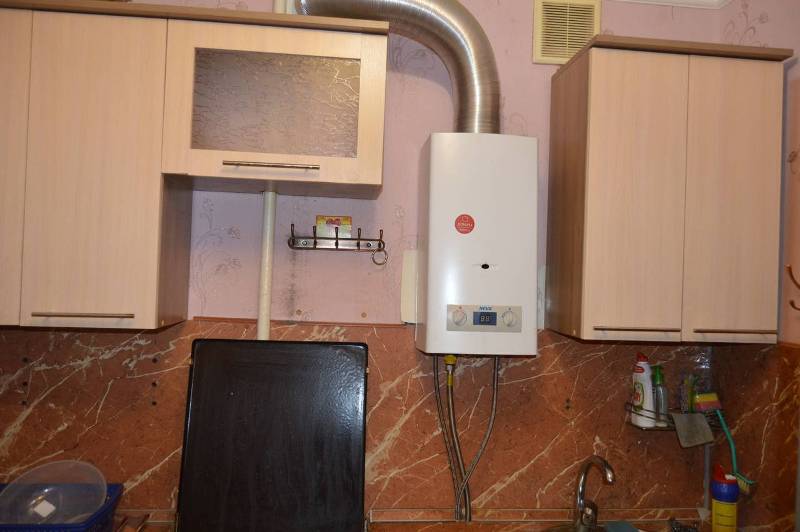
If you choose a gas water heater, you should pay maximum attention to the automatic safety systems it contains. The gas is explosive - the more protection elements in such equipment, the better
Types of water heaters by heating method
All household water heaters are divided into two types - instantaneous or storage. The former allow you to get hot water faster, while the latter are more economical.
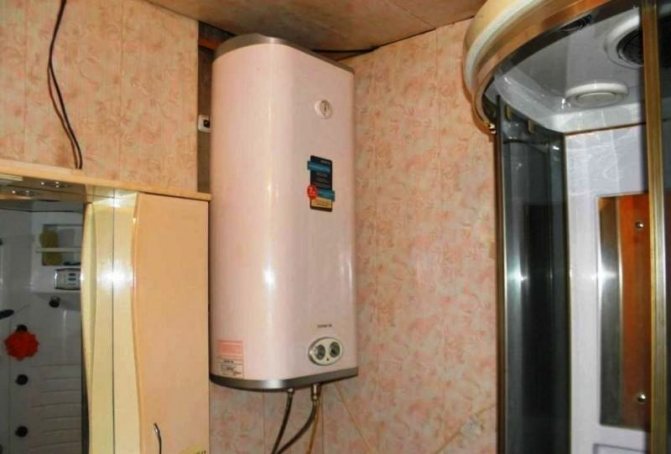
Storage water heaters have a tank with a volume of up to 400 liters, in which the water is first heated to the required temperature, and only then supplied to the hot water system
Flow heaters are distinguished by their simple design. If they operate from the mains, then it is enough to apply voltage and cold water to such a heater - and warm water immediately runs out of the tap for washing and washing dishes.
Option #1 - instantaneous type of water heater
Most often, flow heaters are found in electric versions. A heating element with a large heat exchange area is installed inside them.
The advantages of an instantaneous water heater are as follows:
- Compactness of the device.
- Heating of water only at the moment of its consumption.
- Simplicity of the connection diagram for hot water supply and cold water pipes.
- There are no restrictions on the location of installation of the water heater.
- No noise during operation.
- Instant heating of used water.
But there are also gas appliances of this type on sale.
Among the disadvantages of instantaneous water heaters, the following should be mentioned:
- direct dependence on the availability and continuity of a heat source;
- lack of storage capacity;
- high probability of scale formation on the heat exchanger.
If gas or electricity stops flowing to such a heater, there will be no hot water. In the storage boiler, it is heated in advance and when the power is turned off, it remains warm inside for some time. It does not accumulate anywhere in a flow device.
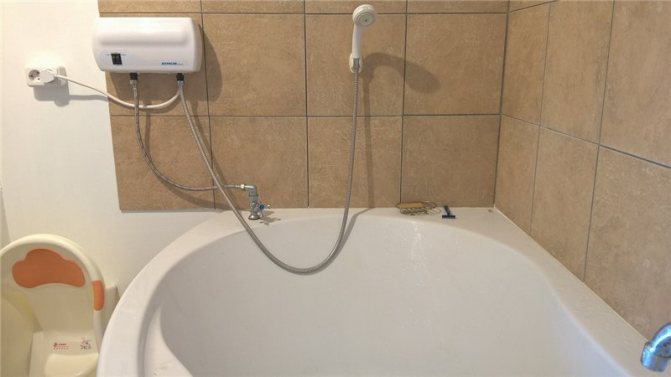
The main feature of instantaneous water heaters is the need to connect them to a centralized cold water supply; you should not take such models to the dacha
Option #2 - storage type water heater
Storage-type heaters can operate either from a centralized cold water supply or from an autonomous source of cold water. In design they resemble a heated thermos. This storage unit is thermally insulated, which allows it to retain heat for several hours without wasting energy on heating.
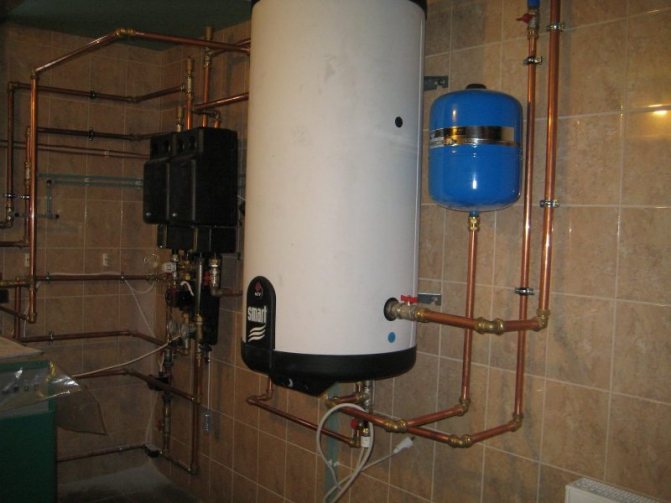
The larger the volume of the tank, the longer the water in it heats up. For example, it will take 2–3 hours to heat a 100-liter container to 60–70 degrees
Among the advantages of storage heaters:
- efficiency and lower energy consumption;
- stability of hot water supply;
- large volume of stored and heated water.
An electric storage water heater with a capacity of 100–150 liters consumes about 1.5 kW. Heating of water in it occurs gradually, so it does not require large powers. Three-phase networks are usually not needed here. It will be enough to connect to a regular household outlet.
Storage water heaters are divided into:
- non-pressure;
- pressure
The first ones have a small tank of 10–50 liters and are designed to supply water to one or two water points. The latter are more spacious, designed only for connection to a centralized cold water supply and provide for the installation of a pump to supply hot water supply to several plumbing fixtures in the house.
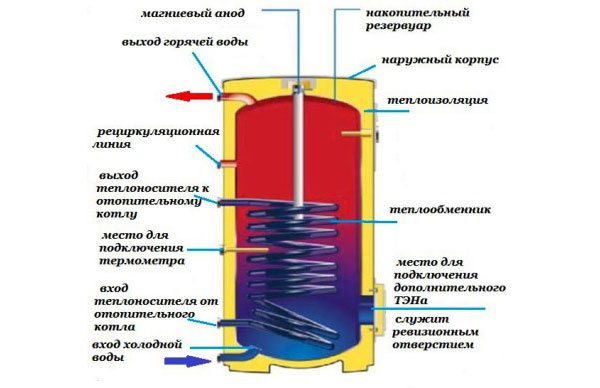
The boiler is designed so that cold water enters it from below, and hot water is taken from above - this further reduces energy consumption for heating
The water heater tank is made of stainless steel, coated with:
- Glass ceramics (glass porcelain).
- Titanium enamel.
- Regular enamel or glaze.
The tank with titanium enamel is the most durable. However, it also costs more than other analogues. Glass ceramics are not subject to corrosion, but at high temperatures they tend to crack, which leads to failure of the drive.
Stainless steel itself easily tolerates thermal expansion, but sooner or later it begins to rust. If the protective layer on it is cracked, then the tank can be safely changed. It won't last long after this.
We provided detailed recommendations for choosing a storage water heater in our other article.
Another mandatory element of the boiler is a magnesium anode. It protects the tank body from the inside from corrosion and scale. This is a consumable item that needs to be changed at least once a year. However, it is not recommended to save on it. Replacing it due to a malfunction of the heating element inside or the entire boiler will obviously be more expensive.
Manufacturers provide a guarantee for such a tank for 4–5 years. But if the magnesium anode is faulty or missing, then the drive will last a year at most. High temperatures and hard water will do their rusty work.
To find out more information about water heater breakdowns and how to fix them, please follow this link.
Do-it-yourself solar water heater for a summer residence
A solar collector or water heater is simply an indispensable device in everyday life. If such a device is of the required volume and design, then it can quite easily provide hot water supply for a family of several people. At the same time, a solar battery makes it possible to save hundreds of thousands of rubles that you would have spent on energy resources.
If your dacha does not yet have a gas supply or electricity supply, then heating water for household purposes is already a small problem, but we suggest you create a solar water heater from materials that are lying around in a landfill.
First you need to find an old faulty refrigerator; to be more specific, you will need a coil that is attached to its back wall. After dismantling the coil, you need to rinse it under water in order to clean it of freon.
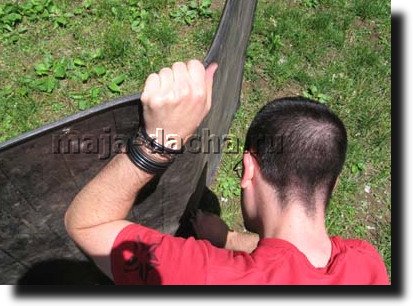
To create a frame, you need slats, and some old rubber mat will also come in handy. You can find glass somewhere, or simply remove it from a window that you don’t need.
We knock down the frame from the slats so that the coil can fit freely between the slats. We measure the rubber mat and the coil to the frame. Now let's mark the fastening points for the bottom rail and the sawing points for the tubes to come out.
Now install the frame rail from below, spread the foil between the frame and the rubber mat. In order to give the structure rigidity, you need to fill the slats. We tape the gaps between the foil and the frame with tape so that cool air from outside does not get inside the collector.
In order to supply water to our coil, a PVC pipe was purchased. Scotch tape provided connection of the coil tubes and sealing. In order to secure the coil, clamps removed from the refrigerator were used. These clamps were also secured with tape, although we recommend using screws for greater reliability.
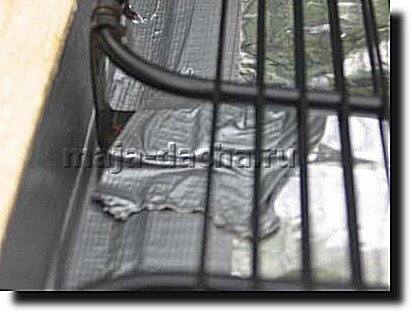
Now let's cover the structure with glass and seal it around the perimeter with tape, our homemade collector is now ready. To ensure better heating, you need to provide direct exposure to sunlight. Let's complete the work by attaching the supporting elements. In order to prevent the glass from moving in extreme heat, you need to screw in a couple of screws from below, which will serve as a support. Now let's attach the hot water collection tank.
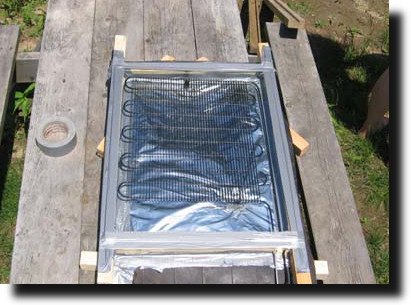
In such a system, automatic circulation occurs due to natural convection. When the water heats up, it becomes less dense, rising up the collector and entering the collection part of the tank at the top through a tube. The result of this is that water is displaced at the very bottom, enters the lower part of the collector, after which it heats up and enters the tank.
1. hot water; 2. valve to relieve pressure; 3. hot water drain; 4 shut-off valve; 5 valve for feeding; 6 – cold water; 7- cold water is supplied; 8 drain valve.
During the period when the sun is shining, there is a constant circulation of water in this circuit and its constant heating. Due to the fact that the tank is slightly raised above the level of the collector, there is simply no effect of cooling the water in this collector, because cold water remains at the bottom of the system. This design can heat water up to 70 degrees.
- Author: Pavel
Rate this article:
- 5
- 4
- 3
- 2
- 1
(39 votes, average: 4.3 out of 5)
Share with your friends!
Comparison of DHW heaters
When choosing a water heater, you should compare the following model parameters in the data sheet:
- Type of energy source – electricity or gas.
- Water heating time.
- Tank volume (for storage boilers).
- Power supply characteristics (for electric water heaters).
- Capacity in liters/minute (for flow-through devices).
- The maximum heating temperature is from 50 to 80 °C.
- Type of device by location.
- Connection features.
The easiest way is to independently install and connect an electric flow-through heater with a power of up to 4–5 kW. You just need to connect a pair of hoses to the DHW inlet and DHW outlet, and then plug the device into the power supply.
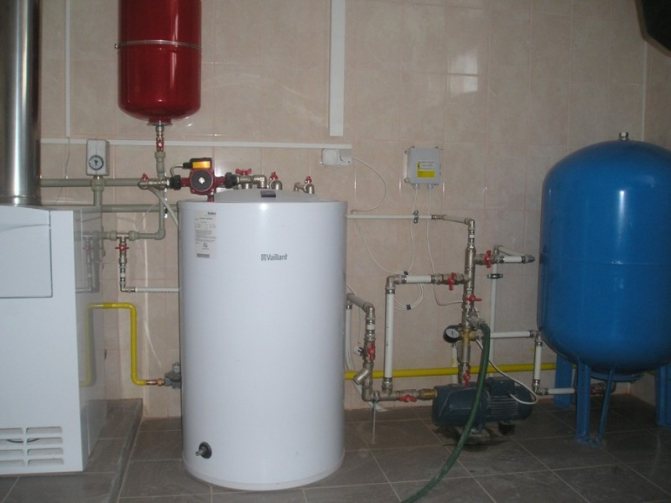
To connect a gas water heater, you will have to invite a specialist from the supplying organization - it is prohibited to connect such equipment yourself
According to the method of location, water heaters are:
- horizontal;
- vertical;
- combined.
They are mounted on the wall, placed on the floor or built into cabinets. At the same time, storage boilers with a large tank are produced only in a floor-standing version. Not every wall is capable of supporting the significant weight of such hot water equipment and the water in it. We talked in more detail about installing and connecting the cumulative model in this article.
For each specific case, you can now find your optimal option. The range of modern water heaters is huge.
If you need a water heater as a safety net in case of hot water outage, then you should take an inexpensive and compact instantaneous model. Other variations in such a situation will be redundant.
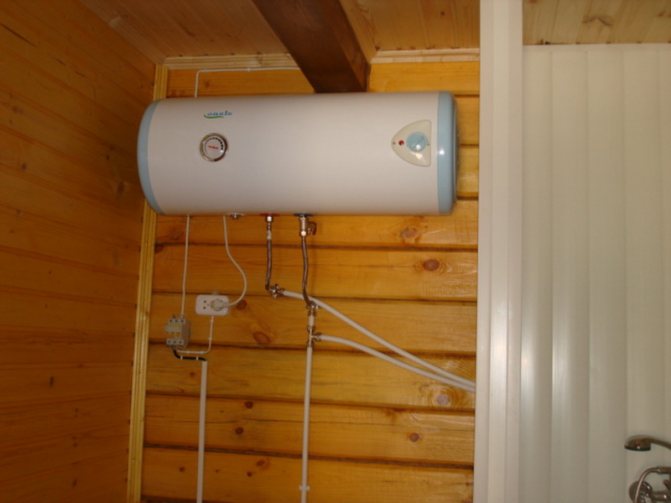
For a summer residence, it is recommended to take a small storage boiler with a tank of 30–50 liters - this is quite enough for washing in the morning, taking a shower and washing dishes in the kitchen sink
If a family consists of three people, then it will need a storage device with a capacity of 100–120 liters. In this case, it is not worth installing a flow-through device due to the high water consumption and electricity consumption. Moreover, if a water heater is needed in a large cottage and there is a gas main, then gas equipment will be unrivaled.
For a large family, you can also take a combined type boiler - a storage tank plus a flow-through heat exchanger. If the first one is completely emptied at some point, then the second one starts working in it. This avoids waiting for the tank to fill and warm up. At the same time, energy consumption is reduced due to the presence and regular use of a storage boiler.
The more powerful the water heater, the more efficient and faster it produces water at the required temperature. However, at the same time, its consumption of electricity and gas is growing. This is especially true for electric heaters. It’s one thing to connect such a device to a 220-volt outlet in the bathroom or kitchen, but quite another thing to pull a separate three-phase cable for it.
What is the structure of the device
Heating a house or heating water (in the same pool) using a solar collector, which transforms solar energy into thermal energy, is the most optimal solution. This is a device that, unlike solar panels that create electricity, provides heating of the direct coolant material. This is why solar collectors are often used as devices for heating water or heating rooms. Today there are two types of similar water heaters: flat and vacuum. Let's look at the structure of a flat water heater. The flat collector for heating water has the following device:
Flat solar water heater
- protective glass;
- copper tubes;
- absorbent surface;
- coolant;
- thermal insulation;
- aluminum frame.
Now let's consider the vacuum model. Its heart is the vacuum tube. It is responsible for absorbing light, which is subsequently converted into heat.
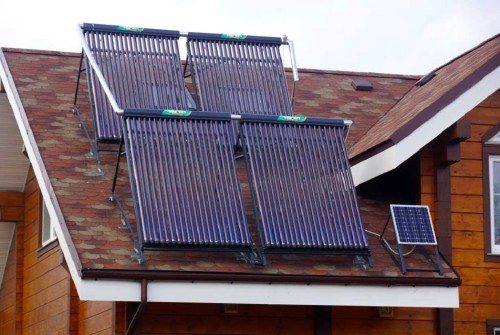
Vacuum solar collector
The pipe itself consists of two glass tubes that are inserted into one another. In this case, their ends will be sealed and the air will be pumped out. The tube that is inside is necessary to absorb light. That's why it's painted black. The glass of the black pipe itself is made of special borosilicate.
Note! Borosilicate is used for the production of hobs installed in the kitchen. This material has high strength and toughness, which provides it with high resistance to cracks.

Vacuum manifold device
The tubes used in the vacuum manifold are perfectly protected from various damages. They are manufactured with a standard thickness of 1.8 mm. The heat pipe of the device transfers heat upward. It is an insulated box. It contains a collector pipe. The collector itself is necessary to remove heat from the tubes. Its body is made of aluminum, which plays into its favor when installing it during the DIY assembly process. It is sealed and prevents moisture from getting inside. Mineral wool is used here as insulation and thermal insulation. The frame is made of aluminum or stainless steel. The choice of material depends on weather conditions and the location of the collector.



